Introduction
For years, creativity was considered a uniquely human skill. Artists, writers, and musicians drew from imagination, culture, and emotions to create. But in 2025, Artificial Intelligence (AI) is challenging that definition. From generating art and music to co-writing books and designing products, AI is sparking a new wave of creativity — one that blends human originality with machine intelligence.
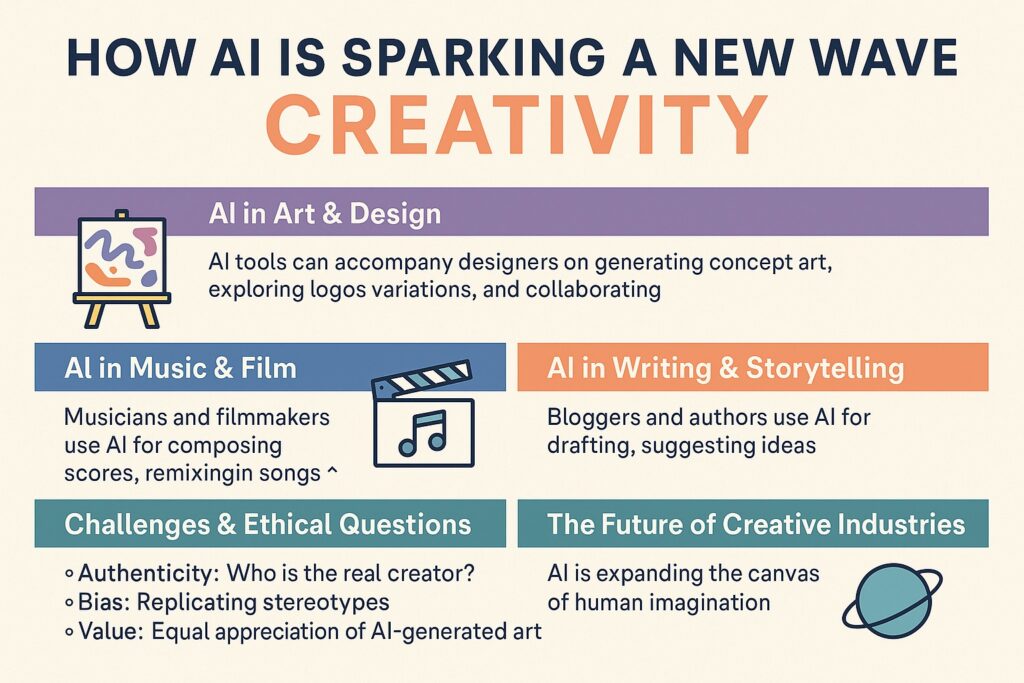
🎨 AI in Art & Design
AI tools can now paint, sketch, and even mimic famous styles. Designers use them to:
Generate concept art in seconds.
Explore endless variations of logos, patterns, and branding.
Collaborate with algorithms for unique visual storytelling.
Example: Many digital artists now use AI platforms to brainstorm color palettes and compositions before adding their personal touch.
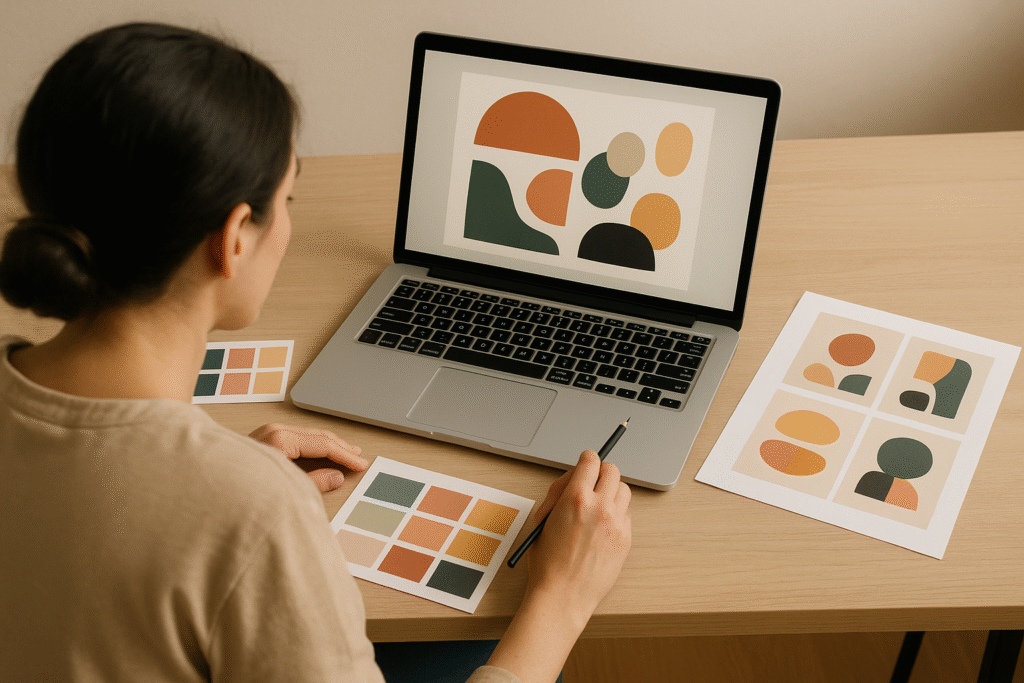
🎶 AI in Music & Film
Musicians and filmmakers are embracing AI for:
Composing background scores quickly.
Remixing songs in different styles.
Assisting in video editing, animation, and special effects.
Instead of replacing creators, AI speeds up the process, freeing humans to focus on emotional and narrative depth.
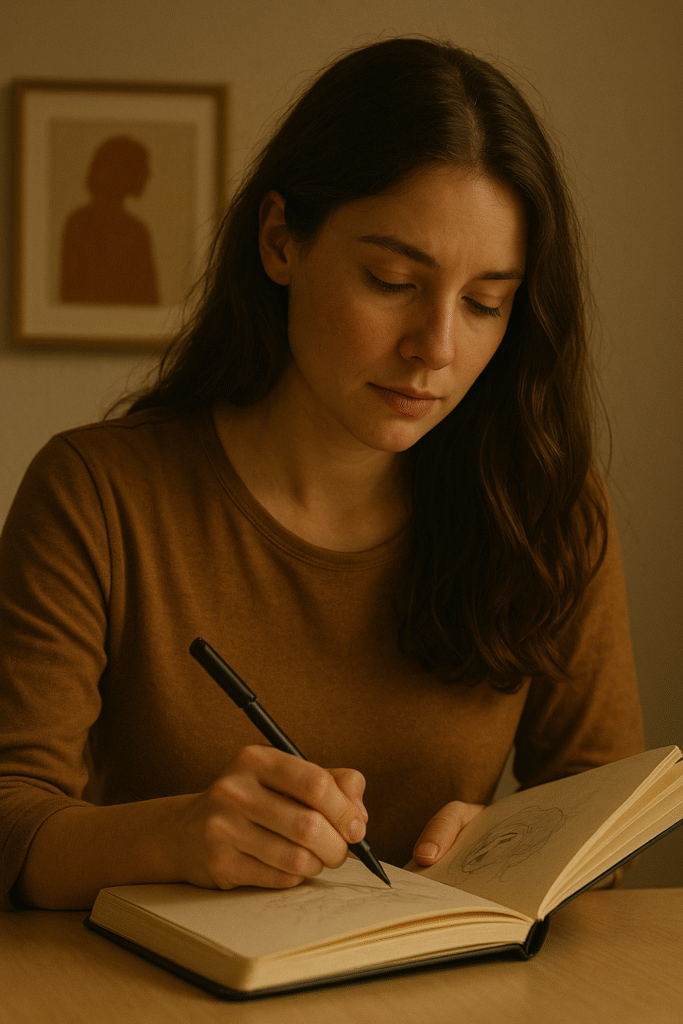
✍️ AI in Writing & Storytelling
Bloggers, authors, and journalists are turning to AI to:
Draft outlines and summaries.
Suggest alternative phrasings.
Translate ideas into multiple languages.
This doesn’t mean machines write “better,” but they amplify creativity by helping overcome writer’s block and sparking fresh ideas.
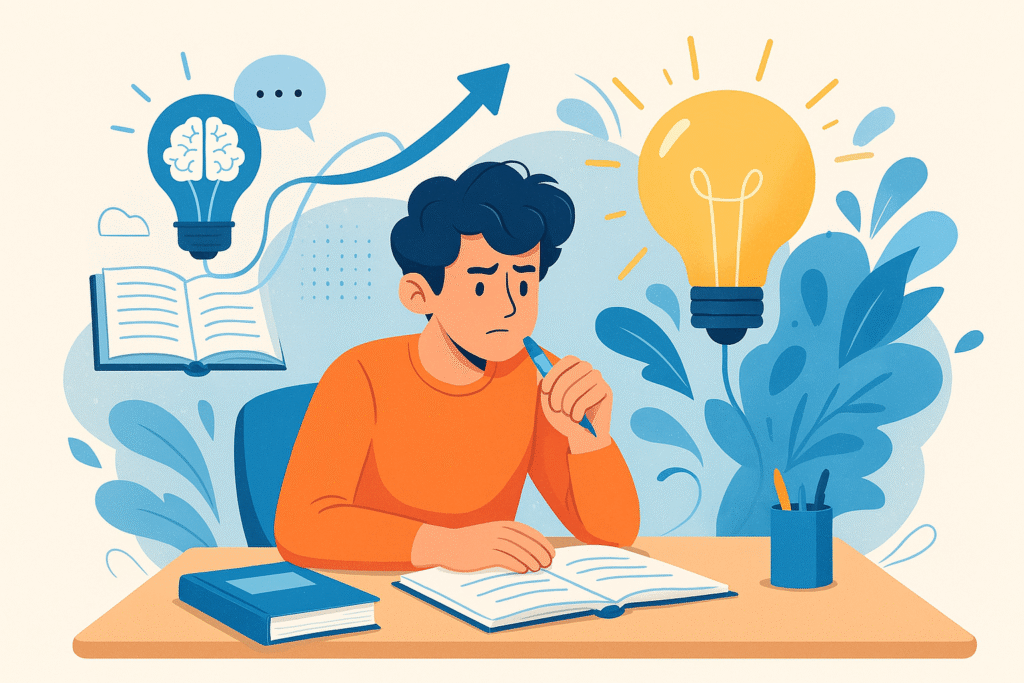
💡 Human + AI Partnership
AI isn’t here to “steal” creativity — it’s a collaborator. The best results emerge when humans guide AI with vision and intent. Together, they create outcomes neither could achieve alone.
Humans bring empathy, cultural context, and originality.
AI brings speed, data analysis, and variation at scale.
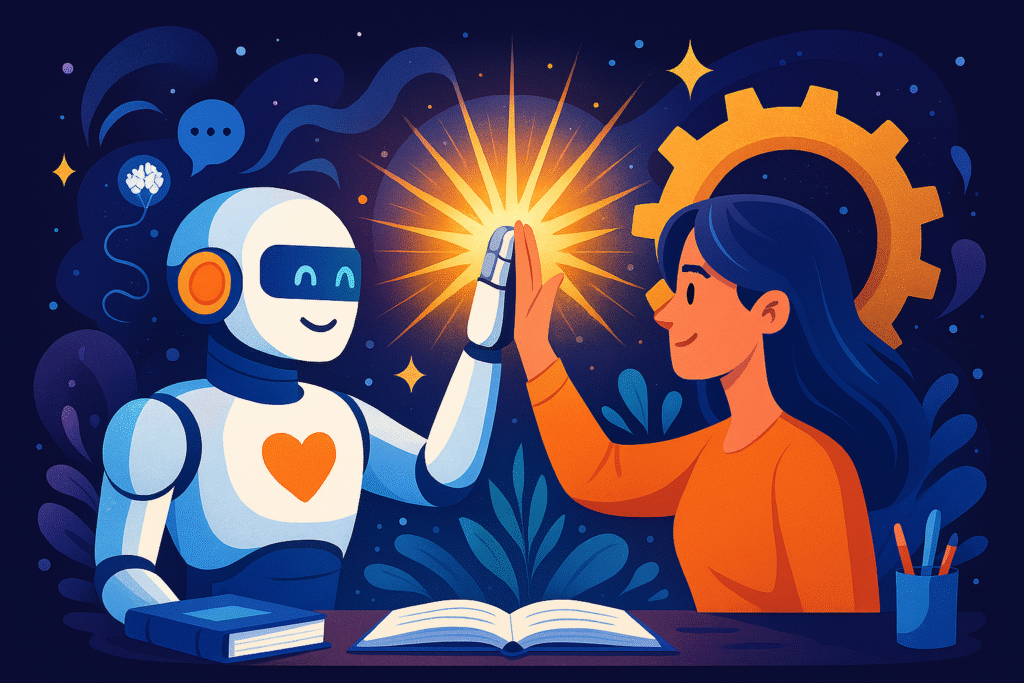
⚖️ Challenges & Ethical Questions
Authenticity: Who is the “real” creator — the human or the AI?
Bias: AI can replicate stereotypes if not carefully trained.
Value: Will audiences value AI-generated art as much as human art?
These debates are shaping the future of creativity.
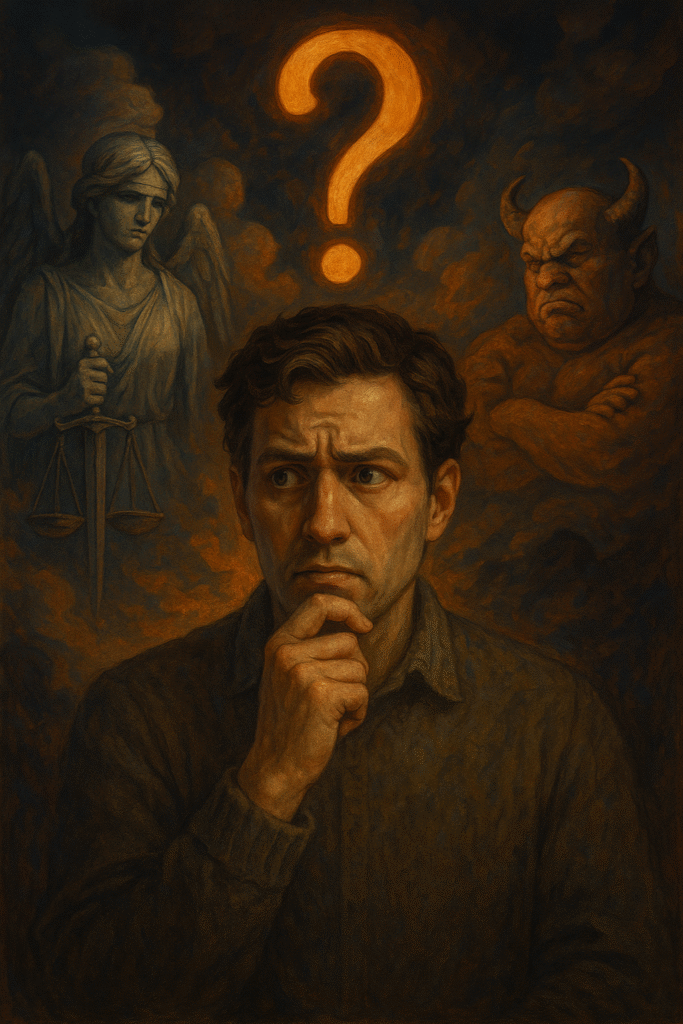
🌍 Future of Creative Industries
We are entering a hybrid era where every artist, student, or professional can use AI as a creative partner. Whether it’s designing clothes, writing novels, or composing symphonies, AI is expanding the canvas of human imagination.
Conclusion
AI is not replacing creativity — it is redefining it. By blending human emotion with machine intelligence, the world is witnessing an explosion of art, stories, and innovations. For bloggers, artists, and dreamers, this is just the beginning of a new creative renaissance.
